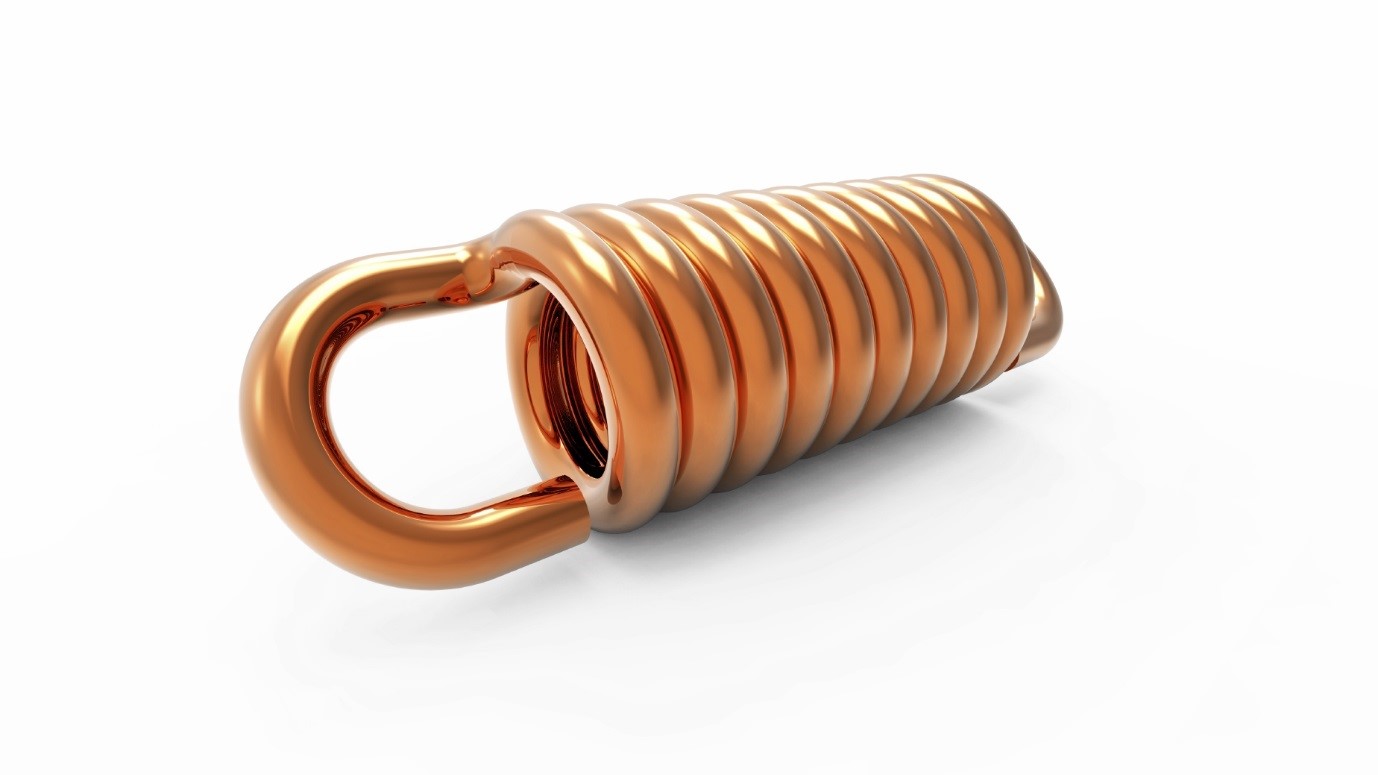The properties of tension springs
Contents |
[edit] Introduction
Tension springs are often used in lever-based mechanisms such as garage doors and are one of the most popular spring types. They are frequently used to provide return force to components that extend in an actuated position.
Tension springs absorb energy to create a resistance to a pulling force. The initial tension determines how tightly together a spring is coiled.
[edit] What are tension springs?
Tension springs are archetypal, tightly-wound springs commonly referred to as ‘extension springs’ and are designed to operate with tension. The spring attaches at both ends to other components, and when the components move apart, the spring attempts to bring the components together again by reverting to its original shape.
The coils of the spring initially touch when no force is applied, but the coils are pulled apart as the components move in an outward direction.
[edit] How are tension springs made?
Even though tension springs differ from compression springs, they are usually made from similar materials including copper, titanium and steel. Steel is the most durable of these, and there are different types of steel used, such as; stainless, cold rolled and alloy steel.
The process of making tension springs involves highly-advanced, hot and cold coiling procedures.
Tension springs are typically manufactured in dimensions of between 0.1 mm and 26 mm, using tension coiling machines. There are a variety of end types available, such as hooks and coiled loops.
Before a tension spring is sold, it undergoes a range of tests. Spring sellers will commonly list features for the spring, including seat pressure and coil bind height.
[edit] Properties of tension springs
The distinguishing feature that sets tension springs apart from other types of springs is the tightness of their coils. Compression springs are commonly a looser type of spring compared to tension springs.
The design of the tightly-wound coil springs is essential in enabling the spring to stretch. The manufacturing process is important in ensuring the design of the springs can hold the components together.
Tension springs vary in size from small medical devices to off-road machinery brake springs, which are considerably larger in size.
[edit] Common uses of tension springs
Tension springs are an essential component of many appliances that would not be able to function without the benefit of the spring’s unique properties.
Given the versatility of tension springs, they are found in products across a range of different industries:
- Construction components.
- Automotive interiors and exteriors
- Carburettors
- Trampolines
- Washing devices
- Farm machinery
- Toys
- Robotics
- Levers
--European Springs and Pressings Ireland Ltd
[edit] Related articles on Designing Buildings Wiki
Featured articles and news
CIOB report; a blueprint for SDGs and the built environment
Pairing the Sustainable Development Goals with projects.
Latest Build UK Building Safety Regime explainer published
Key elements in one short, now updated document.
UKGBC launch the UK Climate Resilience Roadmap
First guidance of its kind on direct climate impacts for the built environment and how it can adapt.
CLC Health, Safety and Wellbeing Strategy 2025
Launched by the Minister for Industry to look at fatalities on site, improving mental health and other issues.
One of the most impressive Victorian architects. Book review.
Common Assessment Standard now with building safety
New CAS update now includes mandatory building safety questions.
RTPI leader to become new CIOB Chief Executive Officer
Dr Victoria Hills MRTPI, FICE to take over after Caroline Gumble’s departure.
Social and affordable housing, a long term plan for delivery
The “Delivering a Decade of Renewal for Social and Affordable Housing” strategy sets out future path.
A change to adoptive architecture
Effects of global weather warming on architectural detailing, material choice and human interaction.
The proposed publicly owned and backed subsidiary of Homes England, to facilitate new homes.
How big is the problem and what can we do to mitigate the effects?
Overheating guidance and tools for building designers
A number of cool guides to help with the heat.
The UK's Modern Industrial Strategy: A 10 year plan
Previous consultation criticism, current key elements and general support with some persisting reservations.
Building Safety Regulator reforms
New roles, new staff and a new fast track service pave the way for a single construction regulator.
Architectural Technologist CPDs and Communications
CIAT CPD… and how you can do it!
Cooling centres and cool spaces
Managing extreme heat in cities by directing the public to places for heat stress relief and water sources.
Winter gardens: A brief history and warm variations
Extending the season with glass in different forms and terms.
Restoring Great Yarmouth's Winter Gardens
Transforming one of the least sustainable constructions imaginable.

























